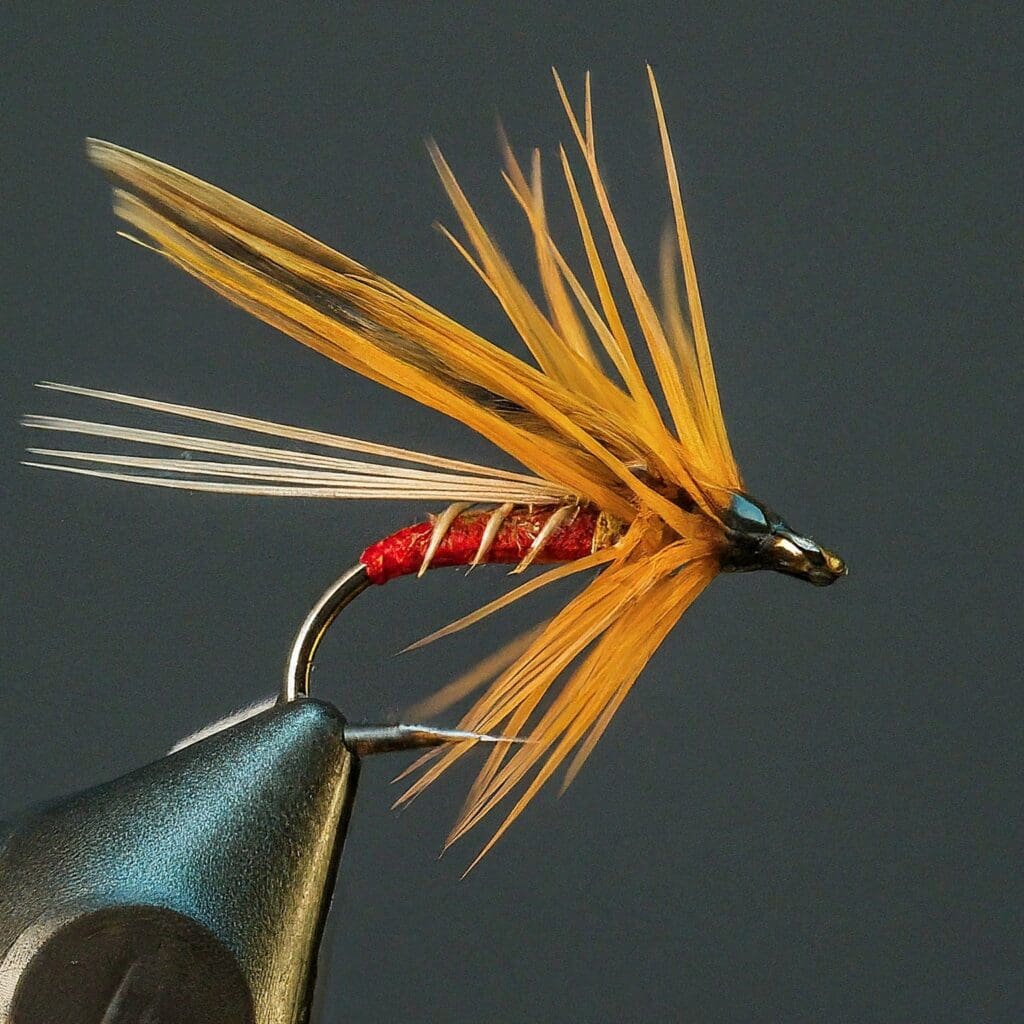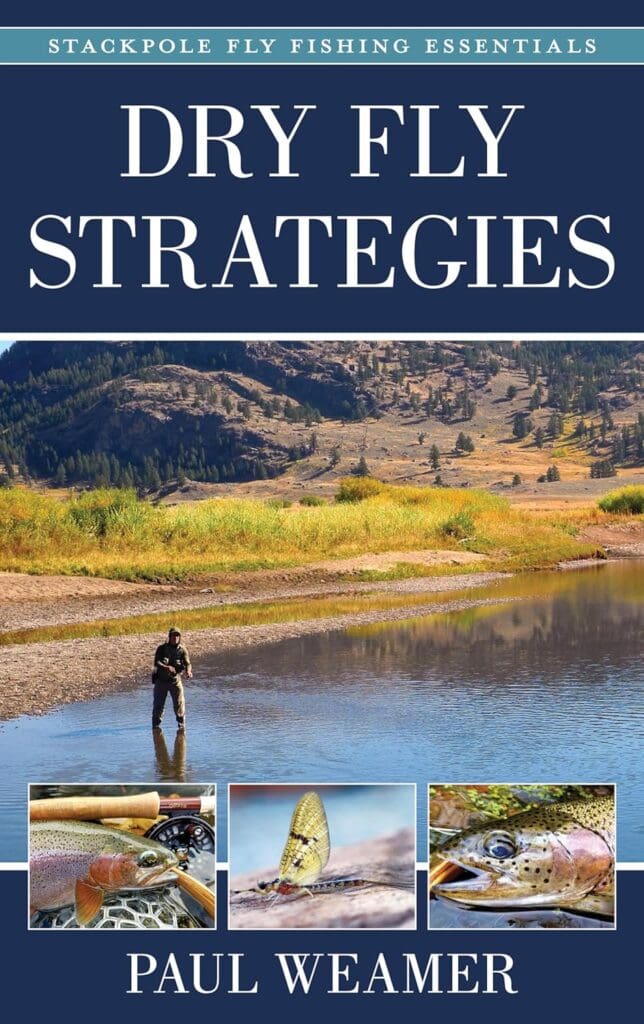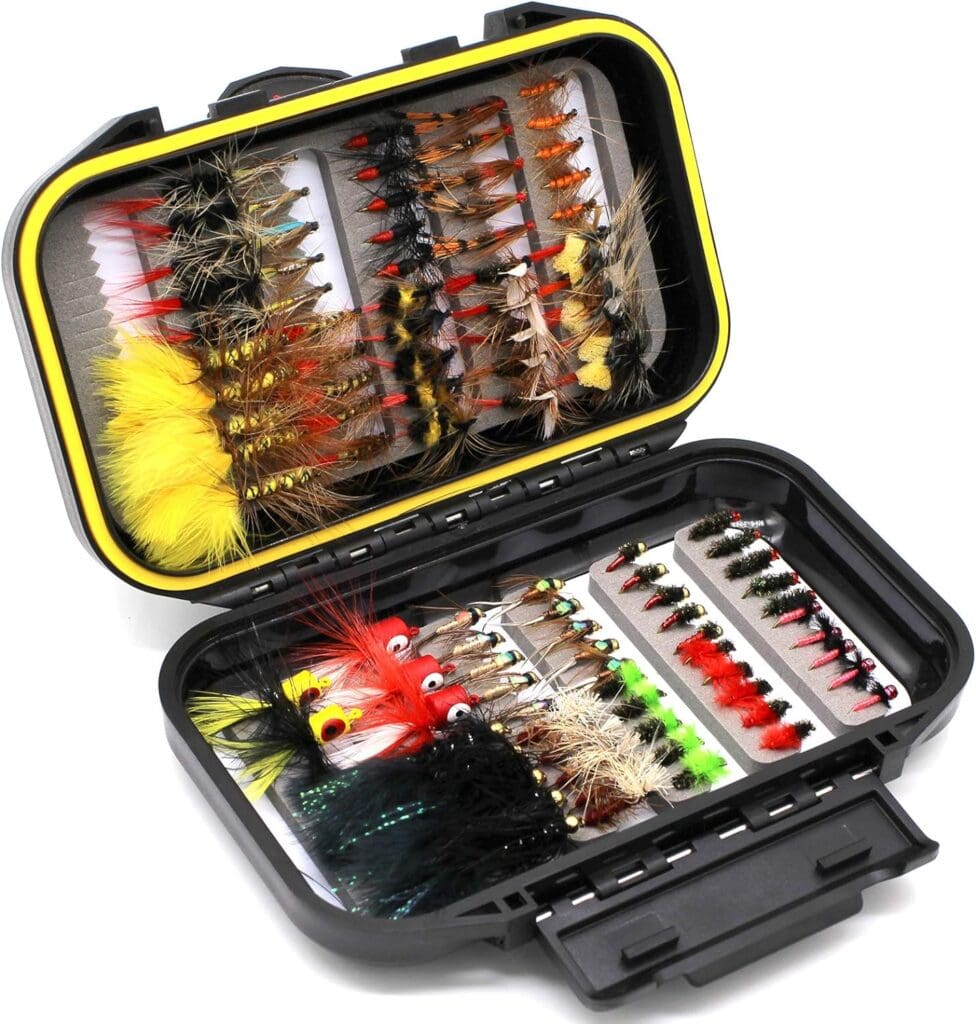Dry Fly Definition
A dry fly floats on water, mimicking adult insects. It’s a lure for surface-feeding fish.
Expanded Explanation
Designers make dry flies to look like bugs on the water. Anglers use them to catch fish like trout that eat surface bugs.
Essential Components of Dry Flies in Fly Fishing
Dry fly components mimic the adult stage of aquatic insects or prey on the water’s surface. They are essential for successful fly fishing, and here are the components:
1. Hook:
The foundation of the fly; hooks come in various sizes and shapes depending on the type of fly being tied and the target fish species.
2. Thread:
Used to bind the materials to the hook, the thread can vary in colour and thickness to match the overall design of the fly.
3. Tail:
Often made from feathers or synthetic fibres, the tail helps to stabilize the fly in the water and can mimic the tail of the insect or prey.
4. Body:
We make the body from materials like dubbing, yarn, peacock herl, or fake stuff. It looks like the insect’s middle part, colour, and feel. So, we design it to match perfectly.
5. Ribbing:
We wrap ribbing, made of wire or tinsel, around the body for lines and toughness. It mimics the segmented body of many aquatic insects.
6. Wing:
We often use feathers, hair, or fake materials to make wings. Then, we tie them to look like the insect’s wings we’re copying. The style and position of the wings can vary significantly depending on the fly.
7. Hackle:
Feathers (usually from a rooster) are wrapped around the hook to create legs and help the fly float. The quality and type of feather are crucial for the buoyancy and appearance of the fly.
8. Head:
Formed by the finishing wraps of thread behind the eye of the hook, the head secures all the materials in place. Sometimes, a bit of glue or varnish is added for extra durability.
Each aspect of the fly’s design, including its components, plays a crucial role in its floatation, visibility, and attractiveness to fish. The materials’ choice and assembly depend on the targeted insect or prey. Consequently, variations are tailored to the specific conditions in which the fly will be utilized.
Importance
Floating fly fishing is crucial for anglers targeting surface-feeding fish. It requires skill to present these flies naturally, making it a cherished method among fly fishers for its challenge and effectiveness.
Context and Usage
Anglers choose a dry fly based on the insects currently hatching. This technique is often used in calm, clear waters where fish can easily spot these floating lures. The goal is to mimic the natural behaviour of the insect.
Examples
Example 1: During a mayfly hatch, an angler uses a dry fly resembling a mayfly to attract trout looking for these insects.
Example 2: In late summer, when grasshoppers are common, fishermen use floating flies that look like grasshoppers to lure fish to the surface.
Understanding the Glossary Term
A common misconception is that dry flies are the only option for fly fishing. However, many flies, including nymphs and streamers, are suited for different conditions and fish behaviours.
Related Dry Fly Terms
- Nymph: This term refers to a type of fly that imitates the underwater stage of an insect, contrasting with the surface-floating fly.
- Streamer: Streamers mimic larger prey such as minnows or leeches and are fished below the surface, offering a different fishing technique from floating flies.
Dry Fly Visual and Reading Aids
Dive into the World of Dry Flies
External Resources
‘Frederic M. Halford’s ‘Dry-Fly Fishing in Theory and Practice,’ published in 1889, stands as a foundational text in fly fishing, authored by the renowned British expert. It outlines the techniques, ethics, and equipment for dry fly fishing, significantly influencing the practice, especially in English chalk streams and America.
The Fly Crate provides an overview of the lifecycle of aquatic insects that dry flies mimic, explaining the significance of understanding these patterns for effective fishing. It also discusses essential gear, including choosing the right rod, line, and floating for different fishing scenarios.
Dry Fly Related Articles
The ‘Bow River Hatch Chart 2024: Master the River Now!‘ offers an essential guide for anglers targeting the Bow River, detailing the critical insect hatches and optimal dry fly patterns to use throughout the year. This resource is invaluable for maximizing success on the water by aligning fly selection with current hatches.
Explore the essential guide to fly fishing on the Crowsnest River. It is tailored for anglers looking to master dry fly techniques amid its renowned hatches. This report provides up-to-date insights and strategies for a successful fishing experience.


